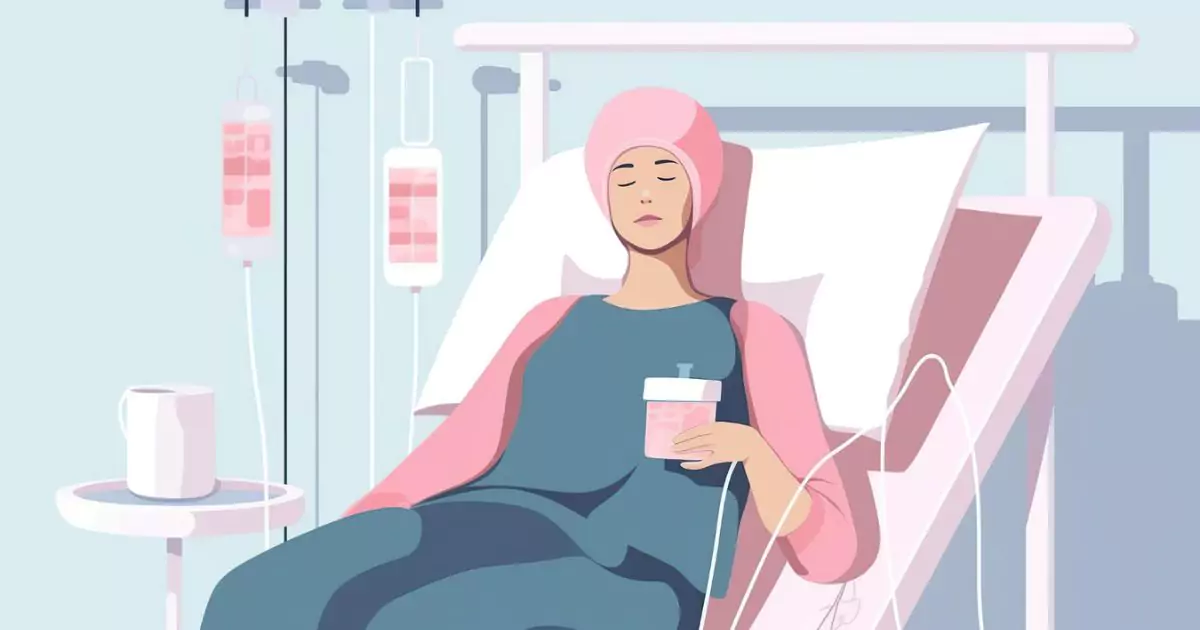Does Health Insurance Cover Treatment for Cancer? How You Can Benefit from It
When facing a cancer diagnosis, one of the primary concerns is the cost of treatment. This worry can be overwhelming, but health insurance can play a critical role in managing these expenses. Understanding whether health insurance covers cancer treatment and how to maximize its benefits is essential for patients and their families. This article explores the various aspects of health insurance coverage for cancer treatment and offers guidance on how to get the most out of your policy.
Does Health Insurance Cover Cancer Treatment?
Understanding Health Insurance Policies
Health insurance is designed to help cover the cost of medical care, including doctor visits, hospital stays, and medications. Most health insurance policies do cover cancer treatment, but the extent of coverage can vary depending on the specific plan. Key factors to consider include:
- Type of Insurance Plan: There are different types of health insurance plans, including Health Maintenance Organizations (HMOs), Preferred Provider Organizations (PPOs), and Exclusive Provider Organizations (EPOs). Each type has different rules about which doctors you can see and how you receive care.
- Coverage Details: Review your policy to understand what is covered under cancer treatment. This typically includes surgery, chemotherapy, radiation therapy, and sometimes experimental treatments.
- Network Restrictions: Many insurance plans have networks of preferred providers. Receiving treatment from in-network providers usually results in lower out-of-pocket costs. Out-of-network care can be significantly more expensive and may not be fully covered.
Pre-Existing Conditions and Health Insurance
Historically, having a pre-existing condition like cancer could affect your ability to get insurance coverage. However, the Affordable Care Act (ACA) prohibits insurers from denying coverage or charging higher premiums based on pre-existing conditions, including cancer. This protection ensures that you can obtain and maintain health insurance coverage even after a cancer diagnosis.
Key Coverage Areas
Health insurance coverage for cancer treatment generally includes several critical areas:
- Diagnostic Tests: Initial tests to diagnose cancer, such as biopsies, blood tests, and imaging (CT scans, MRIs).
- Treatment: This covers a range of treatments including surgery, chemotherapy, radiation therapy, immunotherapy, and targeted therapy.
- Prescription Drugs: Medications used to treat cancer, manage symptoms, or address side effects.
- Hospital Stays: Inpatient care for surgeries or complications related to cancer treatment.
- Follow-Up Care: Regular monitoring and tests to check for recurrence or manage ongoing health issues.
- Supportive Care: Palliative care to manage pain and improve quality of life during treatment.
How Can You Benefit from Health Insurance for Cancer Treatment?

Choosing the Right Plan
Selecting the right health insurance plan is crucial for maximizing benefits for cancer treatment. Consider the following when choosing a plan:
- Comprehensive Coverage: Look for plans that offer extensive coverage for various cancer treatments and associated medical needs.
- Low Out-of-Pocket Costs: Plans with lower deductibles, copayments, and coinsurance rates can help reduce your out-of-pocket expenses.
- Provider Network: Ensure your preferred oncologists and cancer treatment centers are in-network to minimize costs.
- Prescription Coverage: Choose a plan with robust prescription drug coverage, as cancer medications can be very expensive.
Utilizing Preventive Services
Many health insurance plans cover preventive services at no extra cost to you. Utilizing these services can lead to early detection of cancer, which can improve treatment outcomes and reduce overall costs. Preventive services may include screenings such as mammograms, colonoscopies, and Pap smears.
Managing Out-of-Pocket Costs
Even with insurance, cancer treatment can be expensive. Here are strategies to manage out-of-pocket costs:
- Understand Your Policy: Know what your insurance covers and what it doesn’t. Review the summary of benefits and coverage (SBC) document provided by your insurer.
- Out-of-Pocket Maximum: Your insurance plan will have an out-of-pocket maximum, which is the most you will have to pay for covered services in a plan year. Once you reach this limit, your insurance will cover 100% of covered services.
- Financial Assistance Programs: Many hospitals and cancer treatment centers offer financial assistance programs to help cover costs not paid by insurance.
- Non-Profit Organizations: Organizations like the American Cancer Society and CancerCare provide financial aid, grants, and other resources to help with treatment costs.
Coordinating Care
Effective coordination of care is vital for ensuring you receive the best possible treatment while managing costs:
- Primary Care Physician (PCP): Your PCP can help coordinate your care and refer you to oncologists and other specialists within your network.
- Oncologist: Working with a dedicated oncologist ensures you receive specialized cancer care tailored to your specific needs.
- Case Managers: Some insurance plans provide case managers who can help coordinate care, navigate insurance benefits, and manage treatment plans.
Taking Advantage of Additional Benefits
Health insurance plans often include additional benefits that can be particularly useful during cancer treatment:
- Telemedicine: Many plans cover telemedicine visits, which can be convenient for follow-up appointments and consultations.
- Wellness Programs: Programs that promote healthy living can support your overall well-being during treatment.
- Mental Health Services: Access to counseling and mental health services can help manage the emotional impact of a cancer diagnosis.
Utilizing Prescription Drug Coverage
Cancer treatment often involves expensive medications. Maximizing your prescription drug coverage can significantly reduce costs:
- Formulary: Check your insurance plan’s formulary, a list of covered drugs. Ensure your cancer medications are included and understand the tier they are placed in, as this affects your copayment.
- Generic Medications: Whenever possible, opt for generic versions of drugs, which are typically cheaper than brand-name medications.
- Mail-Order Pharmacies: Many insurance plans offer discounts on medications ordered through mail-order pharmacies.
Understanding the Financial Landscape
The Cost of Cancer Treatment
The cost of cancer treatment can vary widely depending on the type of cancer, stage at diagnosis, treatment plan, and geographic location. Common costs include:
- Diagnostic Tests: Initial tests to diagnose cancer can cost thousands of dollars.
- Surgery: Surgical procedures can range from a few thousand to tens of thousands of dollars.
- Chemotherapy and Radiation: These treatments can cost tens of thousands of dollars over several months.
- Hospital Stays: Inpatient stays can add significant costs, especially if complications arise.
- Prescription Drugs: Medications can be particularly expensive, with some new cancer drugs costing over $100,000 per year.
Insurance Premiums and Out-of-Pocket Costs
Health insurance involves several costs, including:
- Premiums: Monthly payments to maintain your insurance coverage.
- Deductibles: The amount you pay out-of-pocket before your insurance starts to pay.
- Copayments: Fixed amounts you pay for specific services, like doctor visits or prescriptions.
- Coinsurance: The percentage of costs you pay after meeting your deductible.
Comparing Insurance Plans
When comparing health insurance plans, consider the following:
- Premiums vs. Out-of-Pocket Costs: Higher premium plans often have lower deductibles and out-of-pocket costs, while lower premium plans may have higher out-of-pocket expenses.
- Coverage Limits: Ensure the plan has no or high coverage limits for cancer treatment.
- Network: Verify that your preferred providers and cancer treatment centers are in-network.
Financial Planning
Effective financial planning can help manage the costs associated with cancer treatment:
- Health Savings Accounts (HSAs): HSAs allow you to save money pre-tax for medical expenses. If you have a high-deductible health plan (HDHP), you may be eligible for an HSA.
- Flexible Spending Accounts (FSAs): FSAs are similar to HSAs but are typically offered through employers and have different contribution limits and rules.
- Insurance Supplements: Consider supplemental insurance policies like critical illness insurance, which can provide additional funds specifically for cancer treatment.
Navigating the Healthcare System
Working with Healthcare Providers
Building a strong relationship with your healthcare providers is essential for effective cancer treatment:
- Open Communication: Be open and honest with your healthcare providers about your symptoms, concerns, and treatment preferences.
- Second Opinions: Don’t hesitate to seek a second opinion to confirm your diagnosis and treatment plan.
- Treatment Plans: Work with your oncologist to develop a comprehensive treatment plan that aligns with your health goals and financial situation.
Legal and Employment Considerations
Cancer treatment can affect your employment and legal rights:
- FMLA: The Family and Medical Leave Act (FMLA) allows eligible employees to take up to 12 weeks of unpaid leave for serious health conditions, including cancer.
- Disability Benefits: You may be eligible for short-term or long-term disability benefits through your employer or government programs like Social Security Disability Insurance (SSDI).
- Job Protection: Understand your rights under the Americans with Disabilities Act (ADA), which protects against discrimination and requires reasonable accommodations in the workplace.
Support Systems
Having a strong support system can significantly impact your cancer treatment journey:
- Family and Friends: Lean on loved ones for emotional support and practical help with daily tasks.
- Support Groups: Join cancer support groups to connect with others who understand what you’re going through and can offer advice and encouragement.
- Counseling Services: Professional counseling can help you cope with the emotional challenges of a cancer diagnosis and treatment.
Health insurance can be a crucial ally in the fight against cancer, providing financial protection and access to essential medical care. By understanding your insurance coverage, choosing the right plan, and effectively managing costs, you can navigate the complexities of cancer treatment with greater confidence and peace of mind. Whether you are seeking preventive care, undergoing active treatment, or managing long-term follow-up, leveraging the benefits of your health insurance can make a significant difference in your journey. Always stay informed, advocate for yourself, and utilize available resources to ensure you receive the best possible care.

